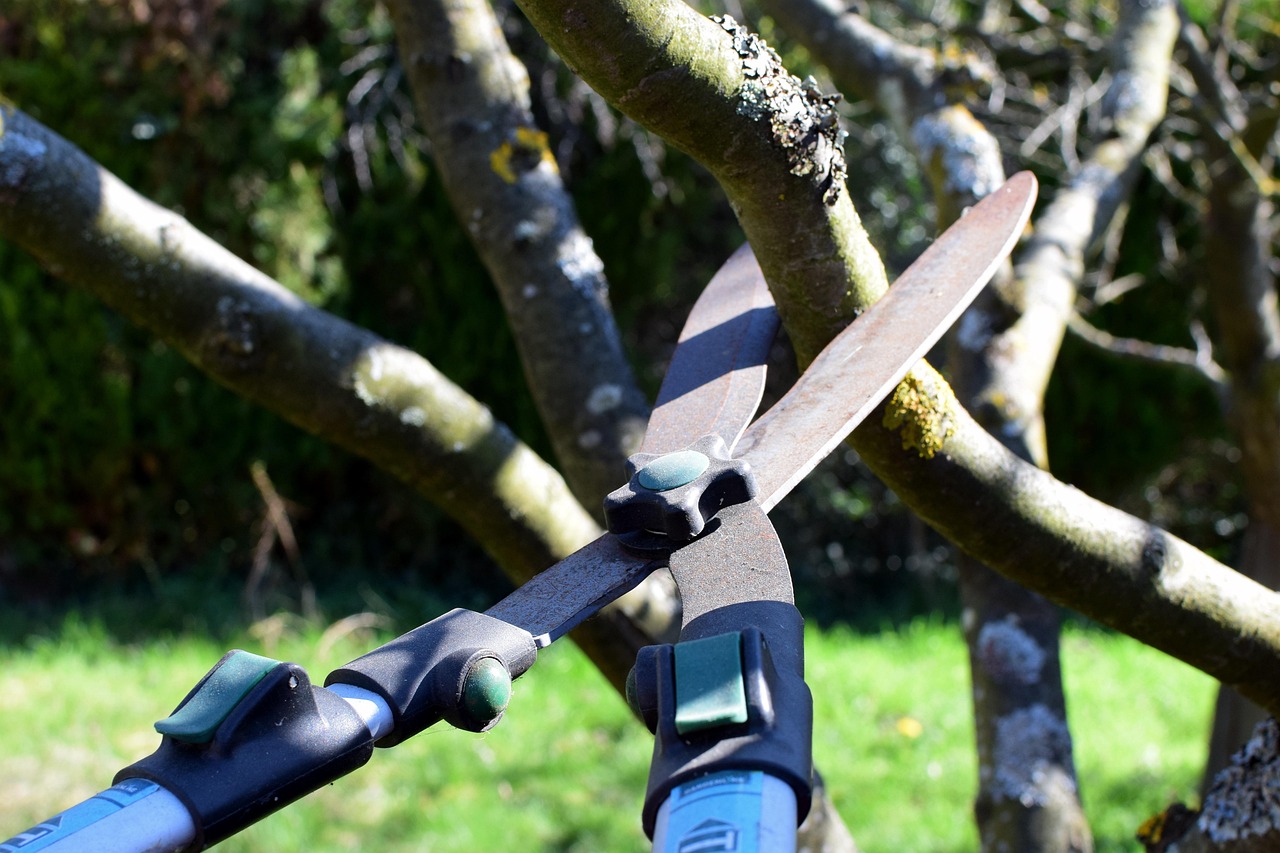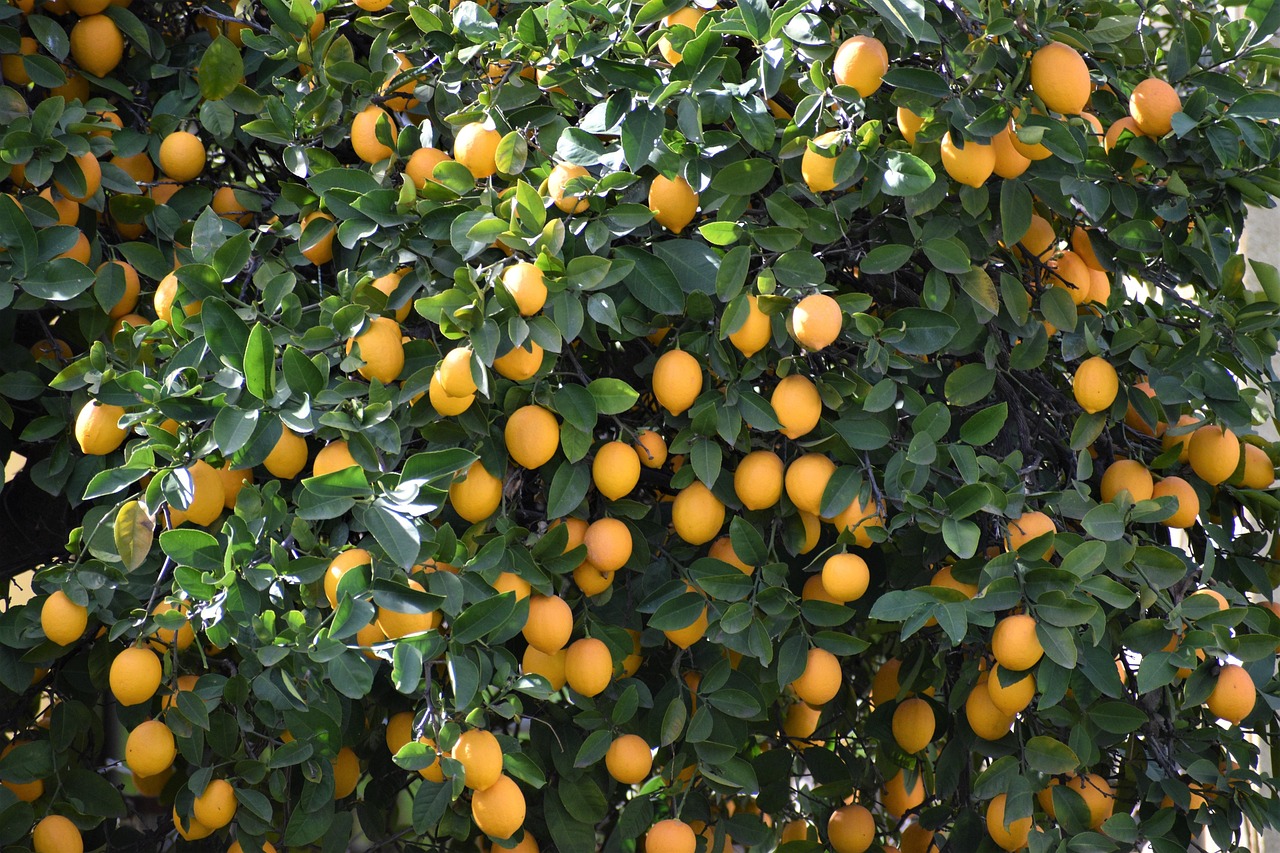Lemon tree pruning plays a crucial role in water conservation, especially in dry climates. By removing excess foliage and dead branches, pruning improves air circulation and sunlight penetration. This leads to healthier trees that require less water while still producing quality fruit.
Lemon trees are popular for their fragrant blossoms and tangy fruits. However, in dry climates, maintaining these trees can be challenging. Water scarcity is a significant concern, making it essential to adopt practices that promote efficient water use. Pruning is one such practice that can enhance the health of lemon trees while conserving water.

In dry climates, the balance between providing enough water and preventing overwatering is vital. Pruning helps to achieve this balance by reducing the tree’s overall size and improving its structure. A well-pruned lemon tree has better access to sunlight and air, which reduces the risk of diseases and pests. Additionally, a healthy tree can tolerate drought conditions more effectively.
Understanding Lemon Tree Pruning
Pruning involves selectively removing certain parts of a tree to encourage healthy growth and fruit production. It is not merely about cutting branches; it requires knowledge of the tree’s growth patterns and needs. There are different types of pruning that can be applied to lemon trees:
- Maintenance Pruning: This involves regular trimming to remove dead or diseased branches and to shape the tree.
- Renewal Pruning: This type focuses on older trees that may have become less productive. It involves cutting back older wood to promote new growth.
- Shaping Pruning: This is done to create a specific shape for better light penetration and air circulation.
Each type of pruning serves a specific purpose and can significantly affect the tree’s health and water requirements. Understanding when and how to prune is crucial for maximizing the benefits, particularly in regions with limited water resources.

Benefits of Pruning for Water Conservation
Pruning lemon trees can lead to several benefits that contribute to water conservation:
- Reduced Water Demand: By removing excess leaves and branches, the tree’s overall water needs decrease. Fewer leaves mean less transpiration, which is the process of water loss from the tree.
- Improved Airflow: Proper pruning enhances airflow around the tree. Good air circulation helps prevent fungal diseases that can thrive in humid conditions.
- Better Sunlight Exposure: Pruning allows more sunlight to reach all parts of the tree, promoting even growth and reducing shaded areas that may require more water.
Key Factors for Effective Pruning
To ensure effective pruning that supports water conservation, consider the following factors:
| Factor | Description |
|---|---|
| Timing | The best time to prune lemon trees is during late winter or early spring before new growth begins. |
| Tools | Use sharp, clean pruning shears or saws to make clean cuts. This helps prevent damage and disease. |
| Techniques | Employ proper techniques, such as making cuts at an angle and just above the node, to encourage healthy regrowth. |
Understanding these factors helps ensure that pruning efforts are effective and contribute to the overall health of the lemon tree. In dry climates, where water conservation is critical, these practices can make a significant difference.

The benefits of pruning extend beyond just water conservation. Healthy lemon trees are more resilient against pests and diseases. They can also produce fruit with better quality and flavor. Therefore, taking the time to prune lemon trees properly is an investment in their long-term health.
In conclusion, lemon tree pruning is a vital practice for those living in dry climates. It not only conserves water but also promotes healthier trees that yield quality fruit. By understanding the principles behind effective pruning, gardeners can ensure their lemon trees thrive even in challenging conditions.
Optimal Pruning Techniques for Lemon Trees
To achieve the best results in lemon tree pruning, it is essential to employ optimal techniques. Different methods can be utilized depending on the growth stage of the tree and the specific goals of pruning. Understanding these techniques can enhance water conservation efforts while promoting healthy growth.

Types of Cuts
When pruning lemon trees, various types of cuts can be made:
- Heading Cuts: These cuts remove the tips of branches, encouraging bushier growth. It helps in shaping the tree.
- Thinning Cuts: This method involves removing entire branches at their point of origin. It reduces the density of foliage and improves air circulation.
- Pinching: A technique used for young trees, pinching involves removing the tips of young shoots to promote branching.
Using these cuts appropriately can help maintain the structure of the tree while ensuring that it does not require excessive water to maintain its foliage.
Seasonal Pruning Considerations
The timing of pruning is vital for maximizing the benefits. Seasonal considerations include:
- Late Winter to Early Spring: This is the ideal time to prune lemon trees. The tree is still dormant, and pruning at this stage encourages robust growth as the temperatures rise.
- Summer Pruning: Light summer pruning can be beneficial. It allows for the removal of any unwanted growth while maintaining some foliage to help with photosynthesis.
- Fall Pruning: Avoid heavy pruning in the fall. This can stimulate new growth that may not survive winter conditions.
Adjusting pruning practices according to the seasons can significantly affect the tree’s health and water needs.
Identifying What to Prune
Knowing which parts of the lemon tree to prune is essential. Certain signs indicate when and where to cut:
- Dead or Diseased Wood: Always remove any branches that show signs of disease or damage. These can drain resources from healthy parts of the tree.
- Crowded Branches: Remove branches that are crossing or overcrowding others. This prevents competition for sunlight and air.
- Weak Growth: Thin out weak or spindly branches. They often do not produce fruit and take away energy from stronger branches.
By focusing on these areas, gardeners can ensure that their lemon trees are healthy and require less water during dry periods.
Pruning Tools and Their Maintenance
The right tools are essential for effective pruning. Using high-quality tools not only makes the job easier but also promotes better cuts that encourage healthy regrowth. Here are some common tools used for pruning lemon trees:
| Tool | Description |
|---|---|
| Pruning Shears | Ideal for making precise cuts on small branches. Look for bypass shears for clean cuts. |
| Loppers | This tool is suitable for cutting thicker branches, providing more leverage than shears. |
| Saws | A small saw may be necessary for larger branches that cannot be cut with shears or loppers. |
| Gardening Gloves | Protect your hands from thorns and sharp branches while pruning. |
Maintaining these tools is equally important. Regular sharpening keeps cuts clean and reduces damage to the tree. Cleaning tools after each use helps prevent the spread of diseases among plants.
The Role of Water Management Post-Pruning
After pruning, it is crucial to manage water effectively. Here are some strategies to consider:
- Assess Soil Moisture: Before watering, check the soil moisture level. This prevents overwatering, which can harm the tree.
- Water Deeply but Infrequently: Deep watering encourages roots to grow deeper into the soil, accessing moisture more effectively during dry spells.
- Mulching: Apply a layer of mulch around the base of the tree. This retains moisture in the soil and regulates temperature.
By integrating water management practices with pruning efforts, gardeners can further enhance the water conservation benefits while supporting their lemon trees’ health.
Incorporating these techniques will lead to healthier lemon trees that thrive even in dry climates, ensuring that both water conservation and fruit production are optimized.
Common Mistakes in Lemon Tree Pruning
Pruning lemon trees can be highly beneficial, but several common mistakes can hinder their growth and water conservation efforts. Being aware of these pitfalls can help gardeners achieve better results.
Over-Pruning
One of the most frequent mistakes is over-pruning. While removing excessive foliage is necessary, cutting back too much can stress the tree. Here are key points to consider:
- Balance: Always aim to maintain a balance between removing old growth and allowing enough leaves for photosynthesis.
- Timing: Pruning too late in the season may promote new growth that cannot withstand winter conditions.
- Observation: Regularly observe the tree’s response to pruning. If growth appears stunted or unhealthy, reassess your technique.
Ignoring Tree Structure
Another common mistake is neglecting the natural structure of the tree. Understanding how lemon trees grow is vital. Here are some tips:
- Central Leader: Aim for a strong central leader branch that supports overall growth. Avoid cutting it unless necessary.
- Open Canopy: Create an open canopy by selectively removing branches that cross each other. This allows for better sunlight penetration.
- Avoid Topping: Topping, or cutting off the top of the tree indiscriminately, can lead to poor growth patterns and increased water needs.
The Importance of Post-Pruning Care
After pruning, providing adequate care is essential for the recovery of the lemon tree. Here are steps to ensure proper post-pruning care:
- Monitoring Health: Keep an eye on the tree for signs of stress or disease after pruning. Look for wilting leaves or discoloration.
- Fertilization: Use a balanced fertilizer to support new growth. Applying fertilizer too soon after pruning can cause unnecessary stress.
- Pest Management: Monitor for pests that may be attracted to the fresh cuts. Implement pest control measures if necessary.
Utilizing Technology for Effective Water Conservation
Incorporating technology can enhance water conservation efforts for lemon trees, especially in dry climates. Here are some tools and methods to consider:
- Irrigation Systems: Drip irrigation systems deliver water directly to the root zone, minimizing evaporation and runoff.
- Soil Sensors: These devices monitor soil moisture levels, providing real-time data to help determine when watering is necessary.
- Drones: Drones can survey large areas, providing insights into plant health and moisture needs.
Benefits of Smart Water Management Systems
Implementing smart water management systems can lead to several benefits:
- Reduced Water Waste: Targeted watering minimizes waste and ensures that each plant receives adequate moisture without excess.
- Enhanced Growth: Healthy moisture levels promote stronger root development, leading to more resilient trees.
- Cost Savings: Efficient water use translates into lower utility bills and reduced environmental impact.
Seasonal Care of Lemon Trees
Caring for lemon trees throughout the seasons helps maintain their health and optimize water conservation. Each season requires different attention:
| Season | Care Tips |
|---|---|
| Spring | Focus on regular watering as temperatures rise. Fertilize after pruning to support new growth. |
| Summer | Monitor for pests and diseases. Increase watering frequency during hot spells while avoiding overwatering. |
| Fall | Prepare trees for winter by reducing watering as temperatures drop. Avoid heavy pruning during this time. |
| winter | Protect trees from frost by covering them if necessary. Minimal watering is required during dormancy. |
By adjusting care strategies based on seasonal changes, gardeners can ensure their lemon trees remain healthy and conserve water effectively throughout the year.
The Role of Community in Sustainable Gardening
Engaging with the community can provide additional support and resources for those interested in sustainable gardening practices, such as lemon tree pruning for water conservation. Here are ways to get involved:
- Community Workshops: Participate in local workshops that focus on gardening techniques specific to your climate.
- Garden Clubs: Join a garden club to share experiences, tips, and resources with fellow gardeners.
- Online Forums: Engage in online gardening forums to seek advice and share best practices with others in similar environments.
By fostering a sense of community, gardeners can share knowledge and support one another in their efforts to care for lemon trees sustainably while conserving precious water resources.
Further Considerations for Lemon Tree Health
Maintaining the health of lemon trees in dry climates requires ongoing attention beyond pruning and watering. Here are several additional factors that can contribute to the overall well-being of these trees:
Nutrient Management
Providing the right nutrients is essential for lemon trees to thrive. Here are some key points about nutrient management:
- Soil Testing: Conduct regular soil tests to determine nutrient levels and pH. This ensures that you provide the right amendments to support healthy growth.
- Organic Fertilizers: Use organic fertilizers to improve soil health and provide essential nutrients. Compost and well-aged manure are excellent options.
- Micronutrients: Ensure that the trees receive adequate micronutrients, such as magnesium and iron, which are crucial for fruit production.
By focusing on nutrient management, gardeners can enhance the health of their lemon trees, allowing them to be more resilient against drought conditions.
Pest and Disease Prevention
Monitoring for pests and diseases is critical in maintaining lemon tree health. Here are some strategies to prevent issues:
- Regular Inspections: Regularly check for signs of pests, such as aphids or spider mites, and take action promptly.
- Companion Planting: Utilize companion plants that deter pests naturally. Marigolds and basil can be effective companions for lemon trees.
- Natural Predators: Encourage beneficial insects that prey on pests. Ladybugs and lacewings can help control populations of harmful insects.
This proactive approach reduces the need for chemical interventions, making it a sustainable practice that aligns with water conservation efforts.
Understanding Lemon Tree Varieties
Different varieties of lemon trees may have unique requirements and growth habits. Familiarizing yourself with the specific variety you are growing can improve care strategies:
- Eureka Lemon: Known for its high yield, this variety produces fruit year-round but may require more attention to watering during hot months.
- Lisbon Lemon: Similar to Eureka, Lisbon lemons are hardy but may be more tolerant of dry conditions.
- Meyer Lemon: A hybrid between a lemon and a mandarin, Meyer lemons are smaller and sweeter. They may be better suited for container gardening in arid conditions.
Selecting the right variety based on climate and care capabilities can enhance success in growing lemon trees and conserve water effectively.
Community Resources for Sustainable Practices
In addition to workshops and clubs, various online and local resources can further assist in sustainable gardening practices:
- Local Botanical Gardens: Many botanical gardens offer classes and resources specific to local flora, including lemon trees.
- Sustainable Gardening Organizations: Organizations such as the Xeriscape Council focus on water-efficient gardening practices and provide valuable information.
- Social Media Groups: Joining social media groups dedicated to gardening can provide ongoing support and inspiration.
Taking advantage of these resources allows gardeners to stay informed about best practices while fostering a community of like-minded individuals dedicated to sustainable living.
Final Thoughts
Lemon tree pruning is not just a matter of aesthetics; it is a vital practice that contributes significantly to water conservation, especially in dry climates. By understanding the principles of effective pruning, gardeners can enhance their trees’ health while minimizing water usage. Proper timing, technique, and post-pruning care are all crucial elements that lead to thriving lemon trees.
The integration of technology, community support, and a comprehensive approach to care will ensure that lemon trees not only survive but flourish in arid conditions. Emphasizing sustainable practices such as nutrient management, pest prevention, and variety selection can help gardeners cultivate robust trees capable of producing quality fruit while conserving precious water resources.
In conclusion, with careful attention to detail and a commitment to sustainable practices, anyone can successfully grow lemon trees in dry climates. By fostering a community of shared knowledge and experiences, we can all contribute to healthier gardens and a more sustainable environment.
